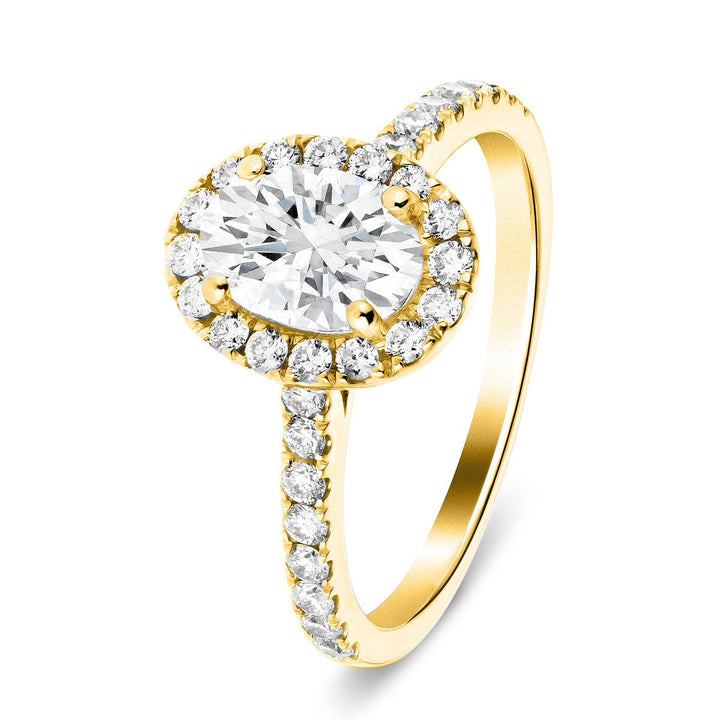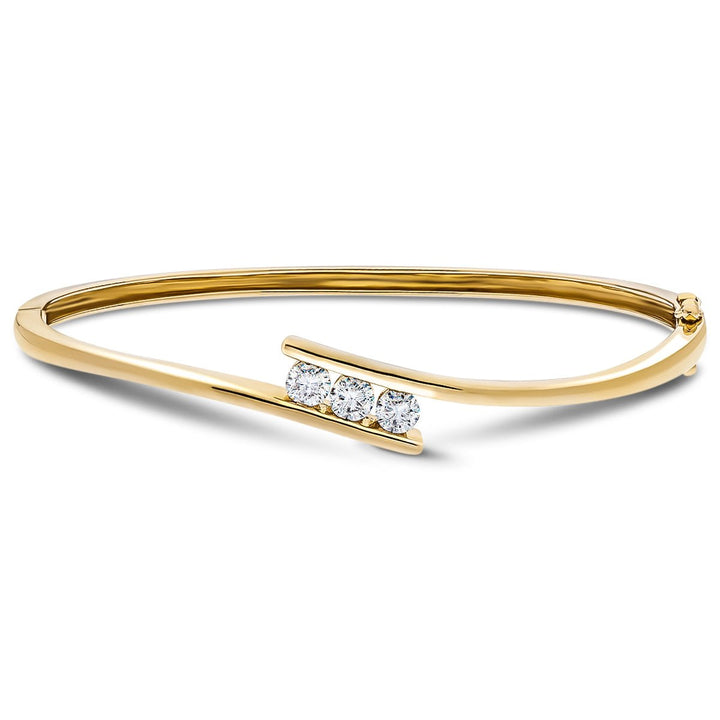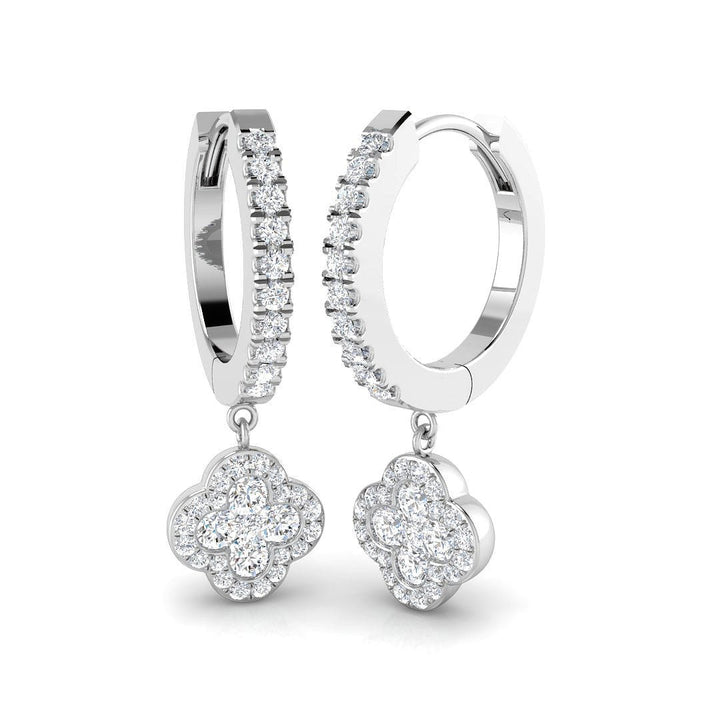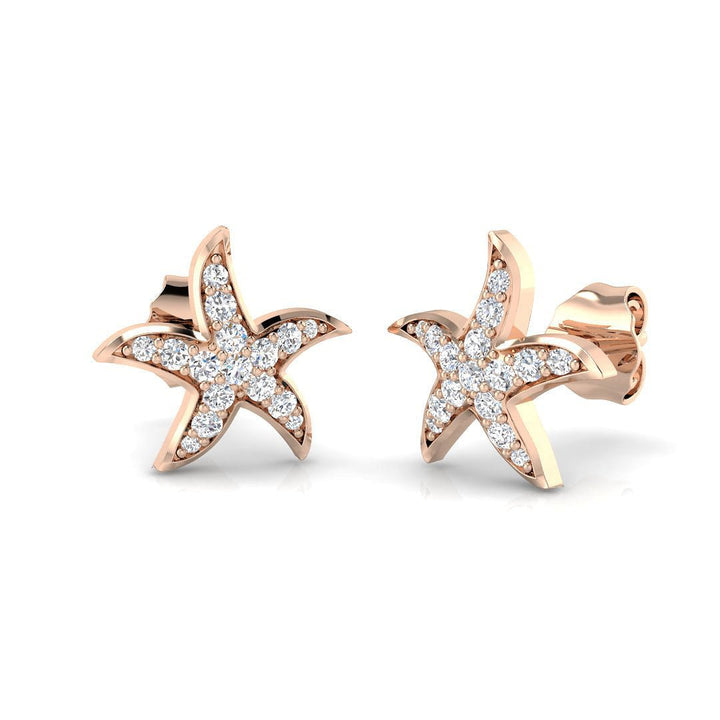In This Article
- Main Highlights
- Understanding the 4 Cs
- Lab-Grown Diamond Quality
- Grading Organisations
- Ethical and Economic Considerations
- Crafted with Care: Explore After Diamonds’ Exclusive Collection
- Frequently Asked Questions
- How Do Lab-Grown Diamonds Compare in Brilliance to Natural Diamonds?
- Can Lab-Grown Diamonds Be Insured Like Natural Diamonds?
- Are specific retailers known for selling high-quality lab-grown diamonds?
- How Long Does It Take to Create a Lab-Grown Diamond?
- Are There Any Special Care Instructions for Lab-Grown Diamonds?
Lab-grown diamonds, distinguished by their ethical allure, adhere to the meticulous standards of the renowned 4 Cs of lab-grown diamonds: Cut, Colour, Clarity, and Carat. The artistry of Cut enhances brilliance, while Colour is graded from D (colourless) to Z, with the most coveted being D through H. Clarity ranges from Flawless to Included, directly influencing a diamond's visual purity and value.
Carat measures size, significantly affecting market perception and elegance. These gems, devoid of conflict, can be as much as 80% less costly than their natural counterparts, embodying sustainability and inclusivity.
Exploring the 4 Cs of lab-grown diamonds further reveals the sophisticated charm of these sparkling newcomers on the fine jewellery scene.
Main Highlights
- The 4 Cs are Cut, Colour, Clarity, and Carat, crucial for assessing lab-grown diamond quality.
- Lab-grown diamonds are ethically sourced, cost-effective, and environmentally friendly compared to natural diamonds.
- GIA and IGI provide rigorous grading for lab-grown diamonds, ensuring trustworthy quality assessments.
- Lab-grown diamonds offer high-quality brilliance and value without the financial strain of natural stones.
- Colour and clarity grades for lab-grown diamonds are comparable to those of natural diamonds.
Understanding the 4 Cs
When evaluating lab-grown diamonds, understanding the 4 Cs—Cut, Colour, Clarity, and Carat Weight—is vital for determining their quality and value.
The cut of a diamond, whether lab-grown or natural, embodies the artistry of precision and elegance. While round brilliant diamonds receive formal cut grades ranging from Ideal to Poor, fancy shapes like oval and princess rely on polish and symmetry assessments. The advanced cutting techniques employed guarantee that lab-grown diamonds achieve a brilliance that rivals their natural counterparts, with quality variations markedly influencing their sparkle and allure. Shape plays a crucial role in determining the cut grade, which is why only round diamonds receive formal cut evaluations.
Colour grading plays a key role in the valuation of lab-grown diamonds. Utilizing a scale from D (colourless) to Z (high degree of colour), these diamonds mirror the spectrum found in natural stones. The presence of impurities can lead to variations in colour grade, often resulting in yellow or brown tones.
The most coveted lab-grown diamonds are often those with colourless to near-colourless grades, such as D, E, F, G, and H, where subtle colour variations can improve their elegance. This meticulous assessment of colour is vital, as it greatly impacts both the diamond's market value and its aesthetic appeal, making the understanding of these nuances indispensable for any discerning jewellery enthusiast.
Chloe Lab Diamond Halo Oval Engagement Ring 0.85ct D/VVS in 18k Yellow Gold

£1,060.00
£2,021.00
Elevate your love with the ethereal beauty of the Chloe Lab Diamond Halo Oval Engagement Ring, meticulously crafted by hand in 18k yellow gold. This stunning ring features a 0.85-carat total weight of diamonds, with an oval cut diamond of… read more
Lab-Grown Diamond Quality
 The 4Cs of Lab-Grown Diamonds Enable Trust and Consistency
The 4Cs of Lab-Grown Diamonds Enable Trust and ConsistencySeveral factors influence the value and desirability of lab-grown diamonds. Inclusion clarity, a critical element, refers to the visibility of inclusions and blemishes, which can range from graining and feathers to cavities and bearding.
Diamonds with fewer inclusions are rarer, improving their brilliance and value. The clarity grades, akin to those of natural diamonds, span from Flawless to Included, guiding consumers in evaluating a diamond's purity. Importantly, lab-grown diamonds are chemically identical to natural diamonds, ensuring that these clarity grades are directly comparable to those of traditionally mined stones.
The cut quality of a diamond is considered the most important of the 4Cs because it directly impacts how well a diamond captures and refracts light, enhancing its sparkle and overall appearance.
Colour variations in lab-grown diamonds arise from the growth processes and conditions, mirroring those of their natural counterparts. These variations are graded on a scale from colourless to deep fancy colours, with factors such as the growth method and seed crystal quality playing pivotal roles. While colourless diamonds typically command higher value, personal preference often dictates colour choice, reflecting individual tastes within a community of connoisseurs.
- Inclusions and Clarity: Affect brilliance and value.
- Colour Variations: Influence appearance and desirability.
- Cut Quality: Improves sparkle, achieved through skilled craftsmanship.
- Production Quality: Driven by growth methods, impacting total excellence.
Understanding these nuances fosters a sense of belonging among aficionados, appreciating the artistry behind each gem.
Lab Diamond Three Stone Bangle 0.75ct in D/VVS 18k Yellow Gold

£2,430.00
£5,395.00
Unveil the epitome of contemporary elegance with the Lab Diamond Three Stone Bangle, featuring 0.75ct of real diamonds in a sophisticated tension setting. This stylish piece, crafted in lustrous 18k yellow gold, measures 7.0mm in width, perfectly encapsulating modern luxury.… read more
Grading Organisations
This evolution underscores GIA's commitment to upholding rigorous grading standards. GIA fully adopted the same grading system for lab-grown diamonds as it did for natural diamonds in 2020, demonstrating its dedication to standardising the evaluation of diamonds regardless of origin.
The International Gemological Institute (IGI), a pioneer in lab-grown diamond certification since 2005, surpasses other organisations in the volume of reports issued. Holding ISO accreditation, IGI's grading standards are trusted by luxury brands and designers alike. Their certification processes include meticulous screening of millions of carats, ensuring precise colour and clarity grading. Nearly 99% of global jewellery diamond production is certified, which emphasises the importance of trustworthy grading.
Additionally, the American Gem Society (AGS), after resuming its grading services for synthetic diamonds in 2020, offers a unique cut grade scale alongside colour and clarity certifications. While other laboratories like HRD Antwerp and GCAL contribute to this landscape, understanding the nuances of each organisation's grading standards is crucial for informed decision-making.
Lab Diamond Clover Hoop Drop Earrings 1.10ct D/VVS in 925 Silver

£720.00
£1,395.00
Elevate your ensemble with our exquisite Lab Diamond Clover Hoop Drop Earrings, featuring a total diamond weight of 1.10ct in a remarkable D/VVS quality. These earrings showcase a harmonious blend of classic and contemporary design, with a clover-shaped pendant meticulously… read more
Ethical and Economic Considerations
Lab-grown diamonds revolutionise the gemstone industry by addressing both ethical and economic concerns head-on.
These diamonds, produced through advanced technology, provide a conflict-free alternative to natural diamonds, guaranteeing ethical sourcing by eliminating ties to conflict zones and human rights abuses. Advanced gemological labs can detect growth history differences, ensuring that lab-grown diamonds are accurately identified and differentiated from natural diamonds, which fosters consumer trust and transparency.
Environmentally, lab-grown diamonds considerably reduce the ecological footprint of diamond production, fostering sustainable market trends and responsible consumption.
The economic appeal of lab-grown diamonds is similarly compelling. They are approximately 80% less expensive than their natural counterparts, offering consumers access to luxurious, high-quality gemstones without the financial strain.
This affordability, paired with increasing consumer awareness, aligns seamlessly with the burgeoning demand for sustainable and ethical diamond options.
- Conflict-Free: Guarantees a diamond free from links to conflict and human rights abuses.
- Cost-Effectiveness: Provides a budget-friendly luxury without compromising quality.
- Environmental Impact: Promotes sustainability with a reduced ecological footprint.
- Transparency: Guarantees clear differentiation from natural diamonds, fostering consumer trust.
As demand grows, market trends indicate a promising future for lab-grown diamonds.
While their resale value may differ, they invite a reimagined perspective on diamond investment, aligning with a more conscious and informed consumer base.
Pave Set Starfish Lab Diamond Earrings 0.20ct in 9k Rose Gold

£250.00
£555.00
These exquisite Pave Set Starfish Lab Diamond Earrings, with a total diamond weight of 0.20ct, encapsulate the allure of the ocean. Crafted in 9k rose gold, they feature brilliantly designed starfish adorned with lab-grown diamonds, offering ethical and aesthetic excellence.… read more
Crafted with Care: Explore After Diamonds’ Exclusive Collection
Lab-grown diamonds are the future of fine jewellery, offering the same brilliance, durability, and elegance as their natural counterparts but with a more sustainable and ethical edge. By understanding the 4 Cs—cut, colour, clarity, and carat weight—you can make an informed decision and find the perfect piece that reflects your style and values.
Discover the beauty and craftsmanship of lab-grown diamonds with After Diamonds.
As a proud British jeweller, every piece is designed and handcrafted in Great Britain, carrying a lifetime workmanship guarantee. Visit After Diamonds today to browse our stunning collections and let our jewellery inspire your next cherished moment.
Beautiful Genuine Diamonds: Beautiful Jewellery
Frequently Asked Questions
How Do Lab-Grown Diamonds Compare in Brilliance to Natural Diamonds?
Lab-grown diamonds compare favourably in brilliance to natural diamonds, often exhibiting superior sparkle intensity due to consistent material quality and advanced cutting techniques. This results in an enchanting allure, appealing to those seeking exceptional diamond brilliance and optical performance.
Can Lab-Grown Diamonds Be Insured Like Natural Diamonds?
Lab-grown diamonds can indeed be insured like natural diamonds, although insurance policies must account for valuation differences. Proper certification, professional appraisals, and thorough coverage are crucial to guaranteeing adequate protection and replacement of these valuable assets.
Are specific retailers known for selling high-quality lab-grown diamonds?
Retailer reputation is vital in selecting high-quality lab-grown diamonds. ILANIS Diamonds exemplifies excellence, offering independently certified diamonds graded by reputable organisations. Their commitment to diamond certification guarantees customers receive trustworthy, ethically sourced gems that align with community values.
How Long Does It Take to Create a Lab-Grown Diamond?
The creation process for lab-grown diamonds varies, with diamond growth times ranging widely depending on the method used, such as HPHT or CVD. Larger diamonds generally require more time, reflecting the complex nature of their production.
Are There Any Special Care Instructions for Lab-Grown Diamonds?
Lab-grown diamonds necessitate specific cleaning techniques and storage tips to maintain their brilliance. Regular cleaning with mild soap and water and storing separately in padded cases can prevent scratches and preserve their pristine condition. However, the care of natural and lab diamonds is exactly the same.





